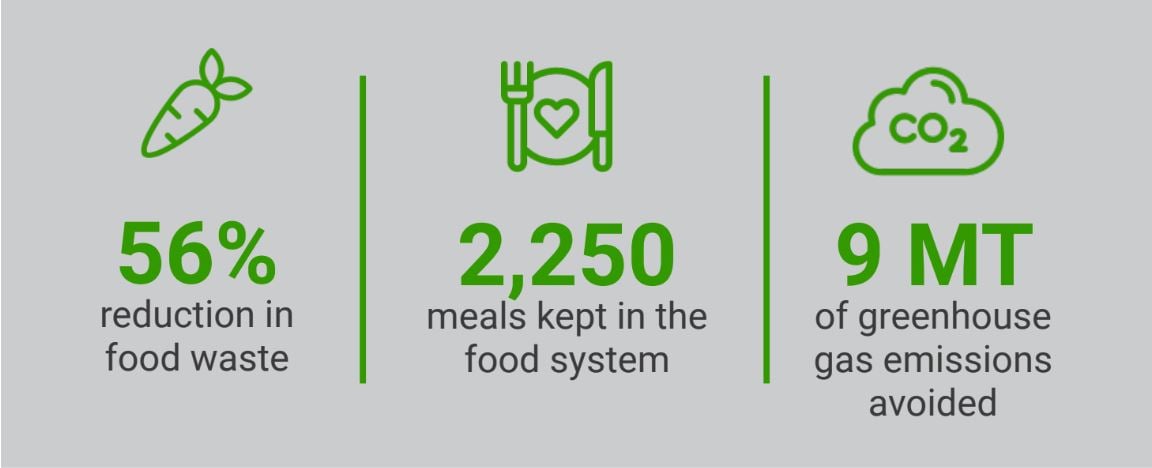Preventing food waste in senior dining, a case study

The foodservice operation at Mt. San Antonio Gardens, a retirement community in California, is run by Sodexo, and serves 1,500 covers a day with buffet and tableside service. The kitchen team, led by General Manager Jack Forrest, began using Waste Watch Powered by Leanpath to track and prevent food waste in 2020. They’ve already prevented 56 percent of their food waste.
“We’re changing behaviors and culture in the kitchen,” explains Forrest. “If I take my salad prep positions, for instance, they cut vegetables all day. But with Waste Watch Powered by Leanpath there’s something bigger that they’re working on. It’s not only providing food for the residents, now it’s reducing waste, it’s minimizing our carbon footprint, it’s helping save money.”
Through their food waste prevention efforts, Forrest’s team has helped avoid 9 metric tons of greenhouse gas emissions. That aligns with Sodexo’s corporate sustainability goals and also aligns with the client’s priority to minimize its carbon footprint.

Through food waste tracking, the staff quickly realized that the buffet was generating the bulk of its waste. The team started making changes. As demand wanes the staff reduce from two buffet lines to one and shrink the pan sizes. They have a supervisor staffing the buffet as service comes to a close to ensure any late-comers are still fed. And the prep staff practiced more precise batch cooking.
“In the past the buffet would need more fries, for instance,” explains Forrest. “The cook would fry a whole bag without pausing to see how close to close we were. If we’re 15 minutes from closing, we don’t need that whole bag of fries.”
Training new staff on Waste Watch Powered by Leanpath is easy, says Forrest. “Food waste prevention is part of our kitchen culture now.”